It took three trains to get to our next stop, Matsumoto—including a trip back to Tokyo before we could catch the express heading out again. Not the most efficient route, but we got there in the end… just with a minor ticketing mishap along the way. We thought just tapping into the platform with our travel cards was enough to cover the journey, but a ticket inspector gently informed us otherwise. Thankfully, he took pity on our confused faces and let us buy tickets on the train. He even helped us find two seats together—what a star! We still had to tap out at the other end, where we were charged £15—the same as we’d just paid him—so who knows if we got it right in the end. All that mattered was we’d made it safely and with all our luggage.
By the time we arrived and checked in, it was already 3 p.m., and in the flurry of platform changes and rushing for trains, we’d somehow gone the whole day without eating. We were ravenous. The only place open was a Nepalese “Pan-Asian” restaurant, so that’s how we ended up ordering Indian curry from a Nepalese man, in Japanese. A truly global dining experience! Thankfully, despite the cultural curveball, the food was delicious and much-needed.
Once we’d refuelled, we walked over to the main draw of the town: Matsumoto Castle. And unlike some of the more modest castles we’ve seen, this one really looked the part. Towering, dramatic, and jet-black against the blue sky, it’s nicknamed the “Crow Castle” for good reason. Surrounded by a wide moat and set against a backdrop of distant mountains, it looked like something straight out of a samurai film. We had a lovely slow wander around the outer gardens in the afternoon sun before heading inside.
Built in the late 1500s during the Sengoku “warring states” period, where there were almost constant civil wars, Matsumoto Castle is one of Japan’s few original castles—meaning it’s not a modern reconstruction like so many others. Its main keep has stood for over 400 years, surviving battles, earthquakes, and even a few attempted demolitions (locals thankfully protested those!). It was designed as a stronghold and symbol of feudal power, with all the defensive features you’d expect: arrow slits, murder holes, steep stairs to slow down attackers, and cleverly placed openings for dropping stones or boiling water.Inside, we climbed floor after floor on steep wooden staircases—practically ladders in places—and discovered how each level served a different purpose. There were familiar sights like the narrow windows for archers and gunmen, but also some new-to-us spaces like a floor for storing rice (to sustain defenders during a siege), and a watchtower nicknamed the “crow’s nest” where war councils were held. It was equal parts fortress and time capsule, and we really enjoyed taking our time exploring it all.
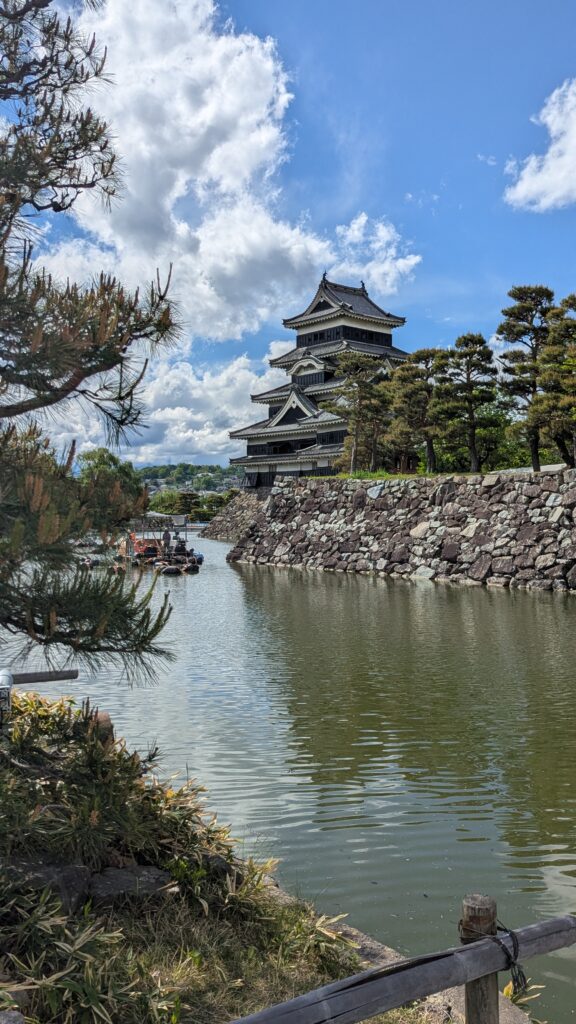
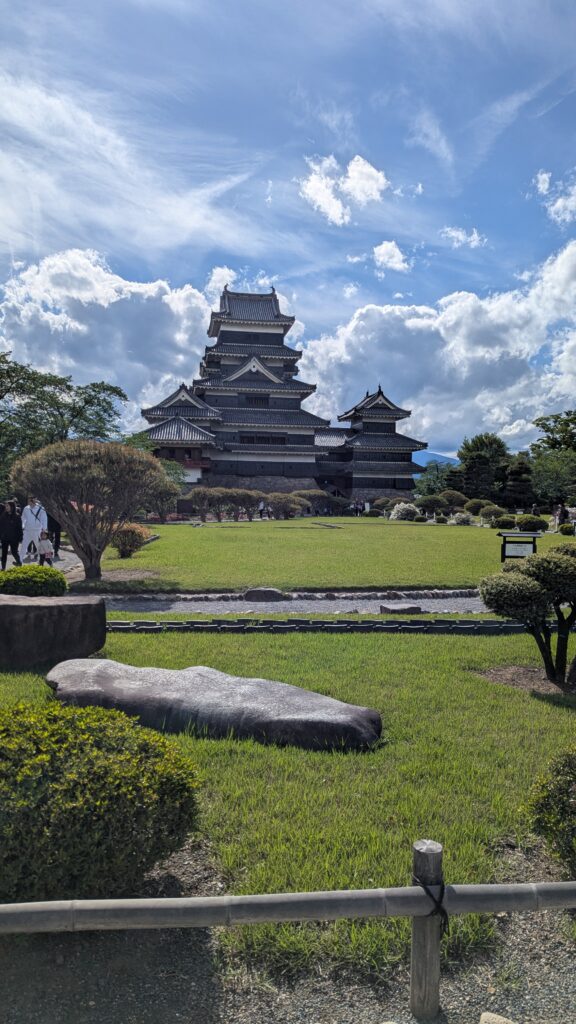
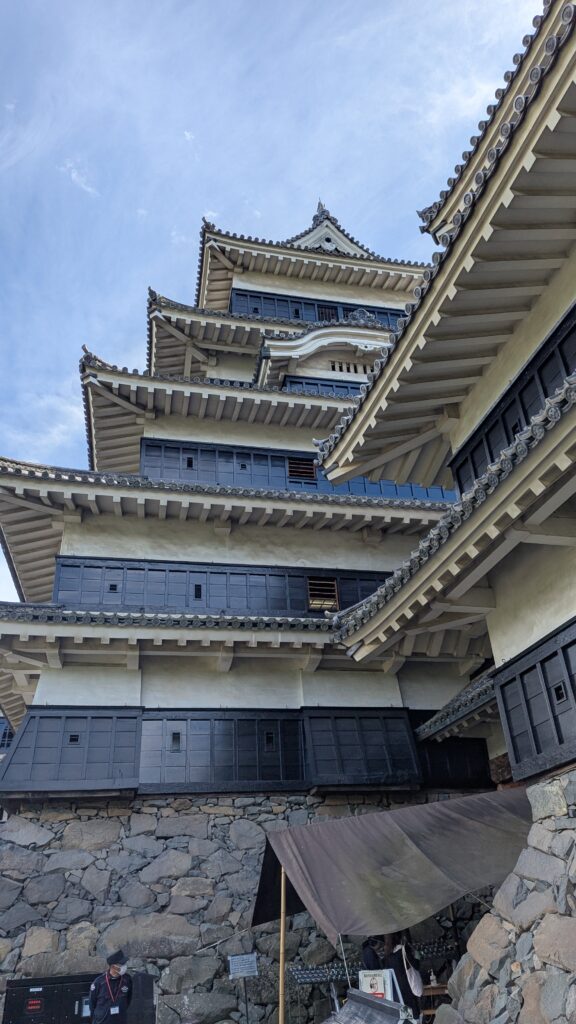
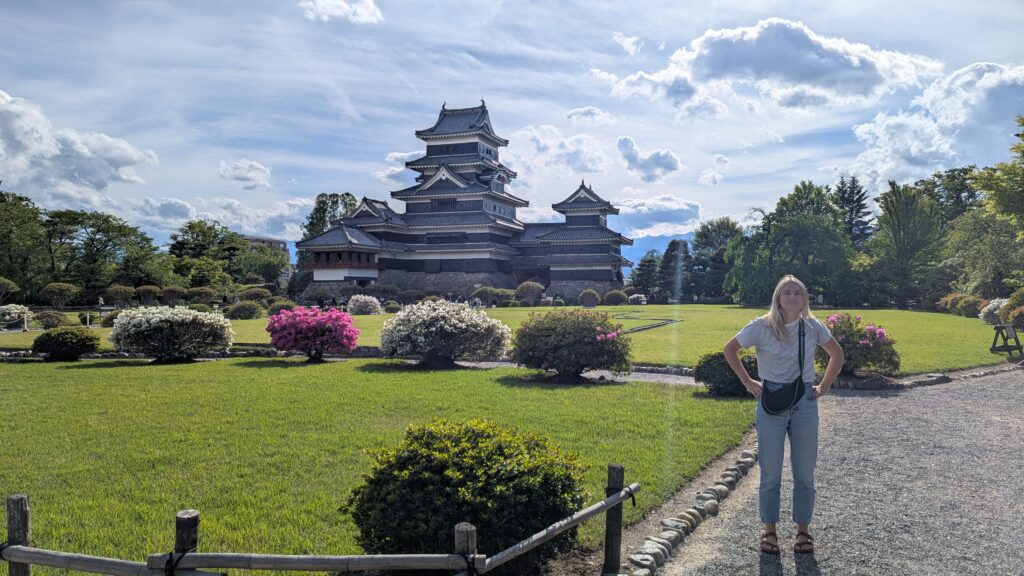
After the castle, we wandered down the riverside near our hostel, past rows of little touristy shops filled with the most tempting ceramics—tiny soy sauce bowls, elegant chopstick rests, all so beautifully made and delicate. The kind of things that would probably live in a cupboard untouched back home, but still felt impossible to walk past without sighing over. Sadly, our bags are already pushing their limits, so we resisted… for now.
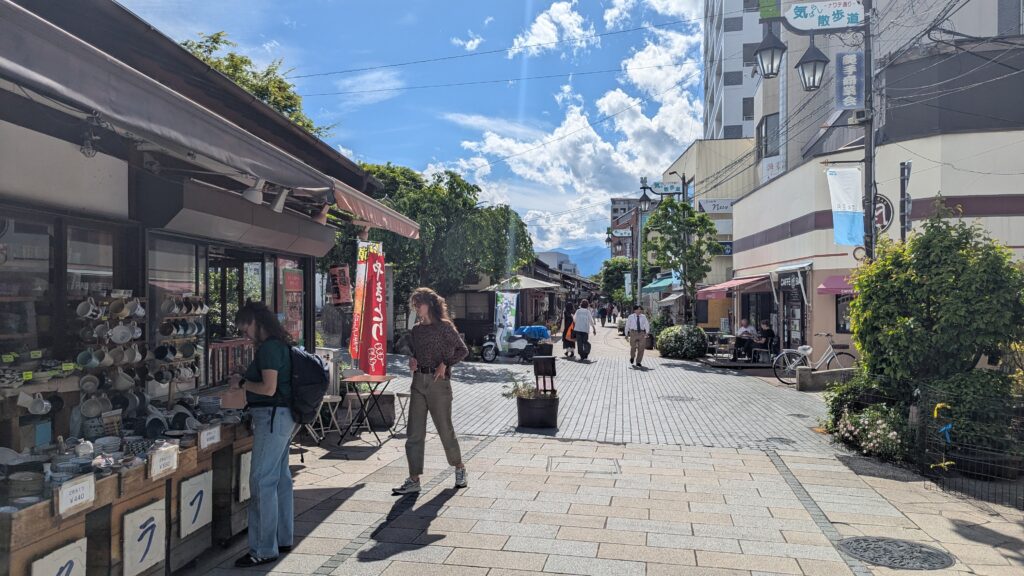
Instead, we treated ourselves to some cold drinks and a slice of carrot cake, which we shared while sitting by the river in the sun, writing postcards and soaking up the peaceful atmosphere. A lovely, calm afternoon after the train chaos—and a perfect reminder of why slower towns like Matsumoto are such gems.
Our second day in Matsumoto didn’t quite go to plan. We’d hoped to visit a nearby wasabi farm in the morning and then head to the old post town of Narai-juku in the afternoon. Turns out both of those are much better accessed by car. The wasabi farm was only a 30-minute drive away, but over two hours by public transport and more than £120 by taxi—so we decided to skip it and go straight to Narai-juku instead.
Narai-juku is one of the best-preserved Edo-period post towns, once a key stop for travellers journeying along the Nakasendo Trail between Kyoto and Tokyo. We were excited to visit, but when we checked train times we saw the next one wasn’t until midday. No problem—we took it as a sign to slow down a little, had a relaxed morning, enjoyed some delicious bagels for breakfast, and pottered around the shops, local shrine and riverside in the warm sunshine.
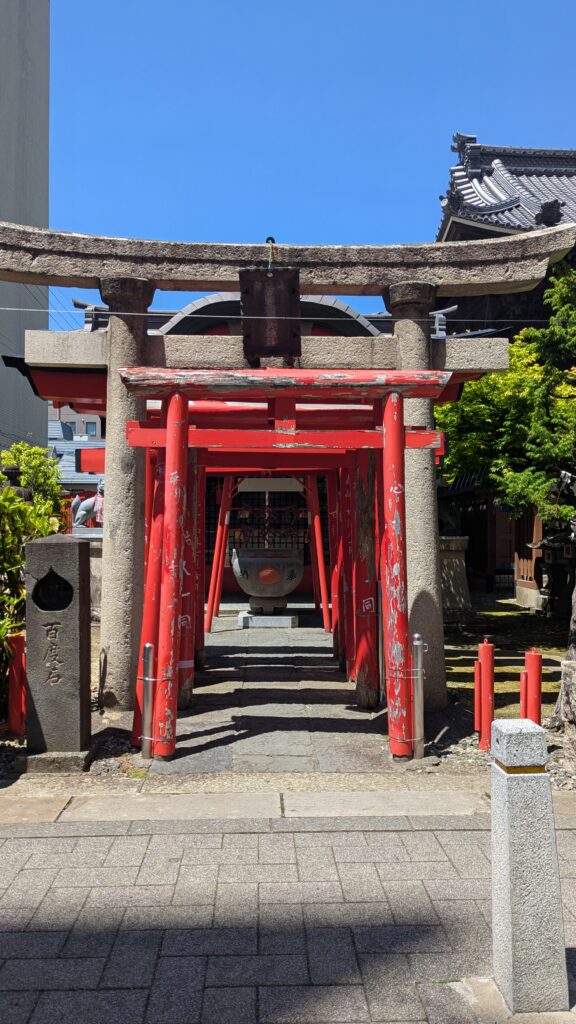
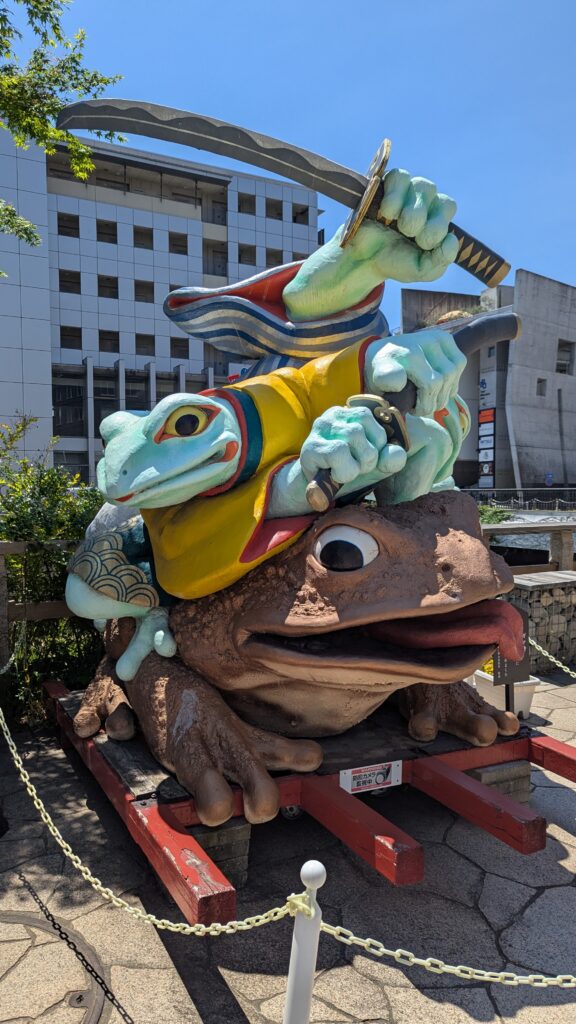
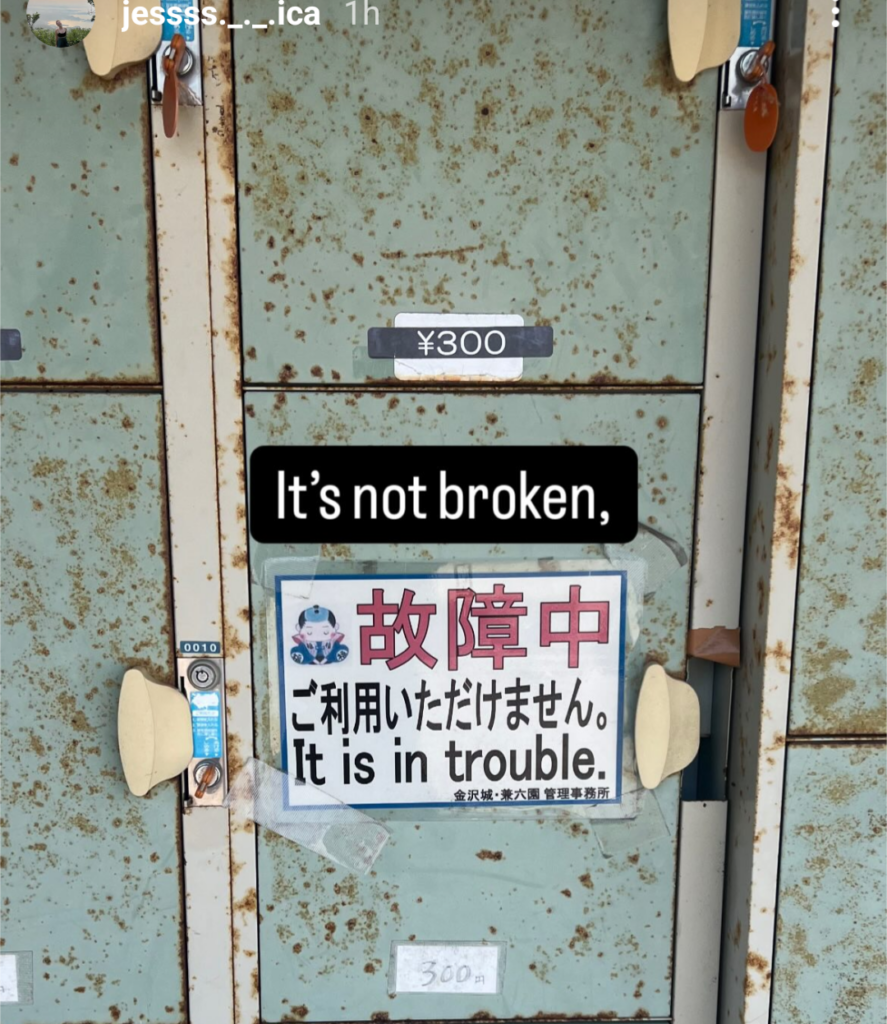
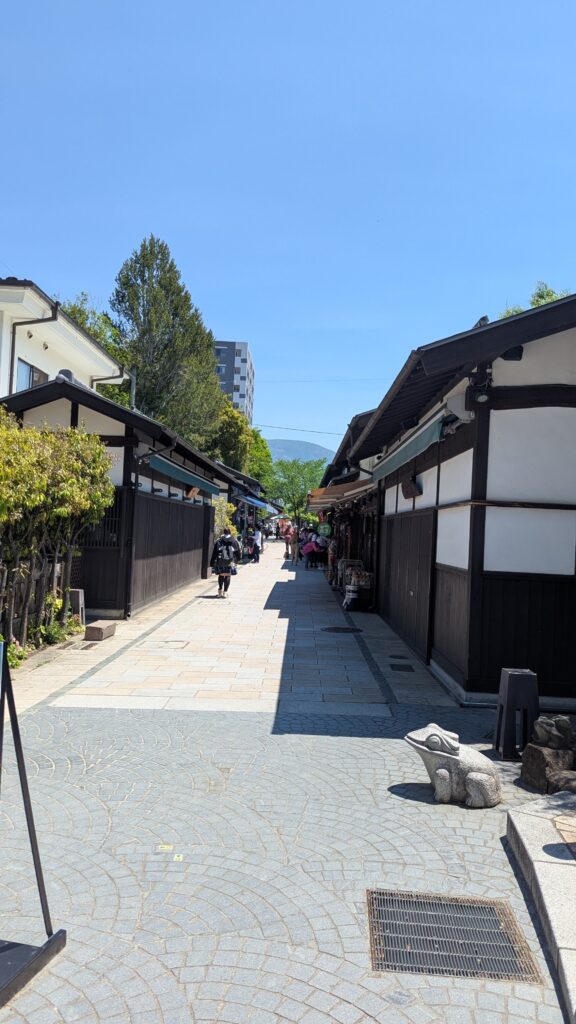
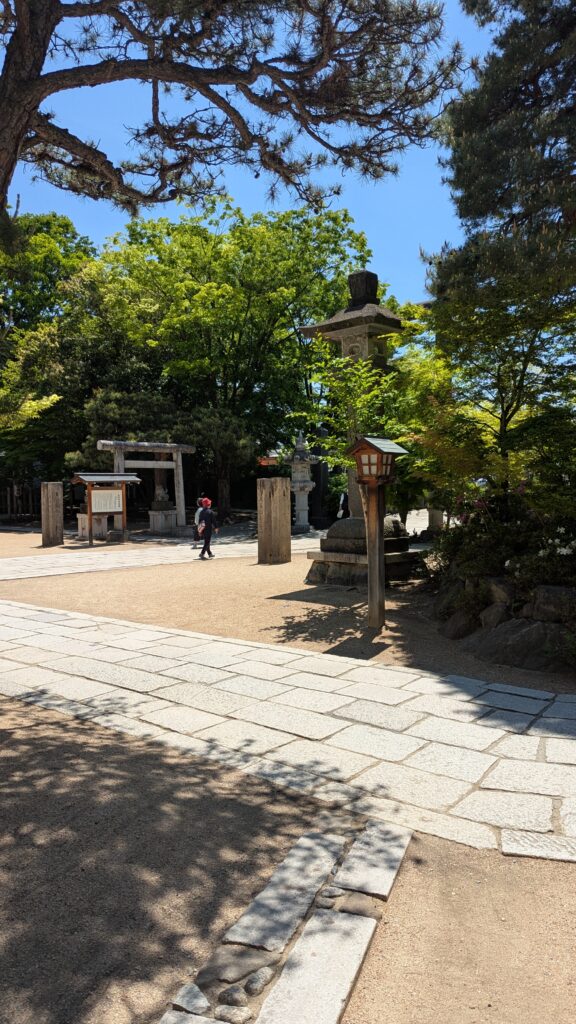
At around 11:30 we headed to the station, bought £15 return tickets to Narai-juku, and settled in to wait. But while looking at the tickets, we noticed the return was dated for the following day. A quick check revealed there were no trains back from Narai that afternoon, and once again a taxi would have cost over £120 for the return—despite it being less than an hour’s drive away. So, in the end, we didn’t get on the train. A shame, but at least we realised before we ended up stranded!
With zero out of two of our original plans working out, we scrambled for alternatives. A quick Google search turned up something unexpected: Matsumoto is actually the hometown of Yayoi Kusama, the world-renowned avant-garde artist known for her bold dots and surreal installations. So off we went to the local art gallery, which had several of her pieces on display—including one of her famous pumpkins—as well as work by other artists, including a brilliant exhibition featuring local artists all over 80. Very cool and wonderfully weird.
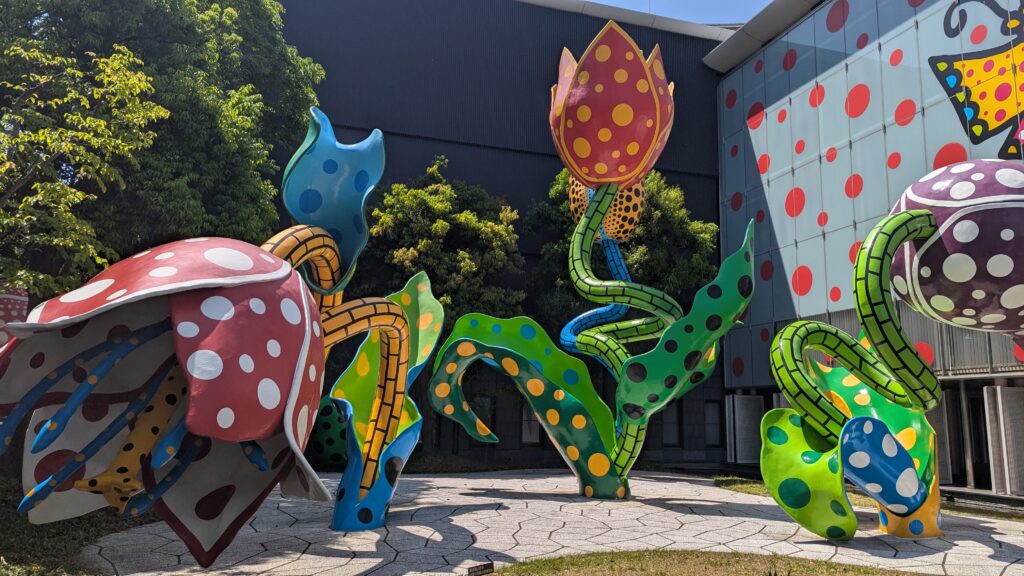
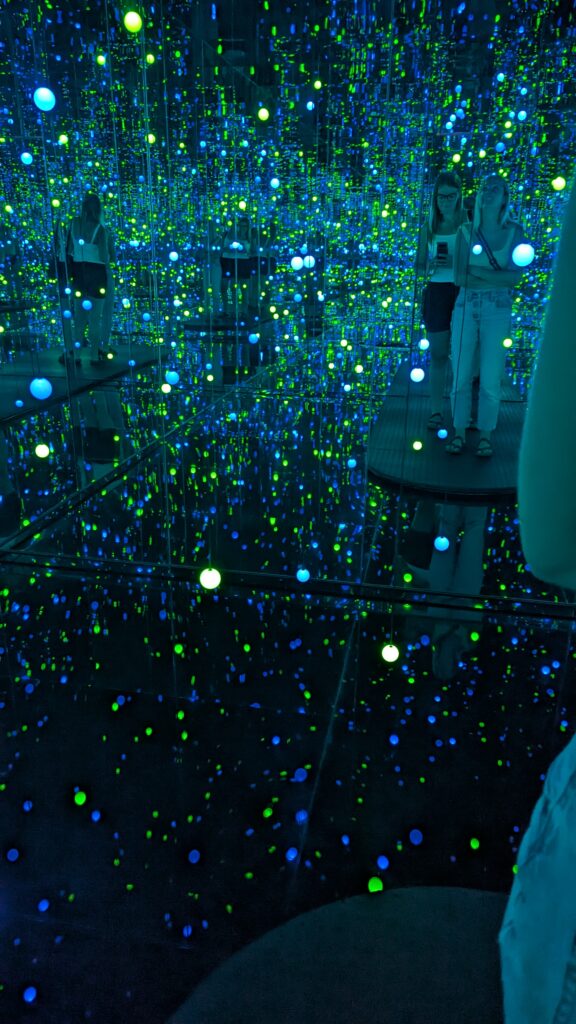
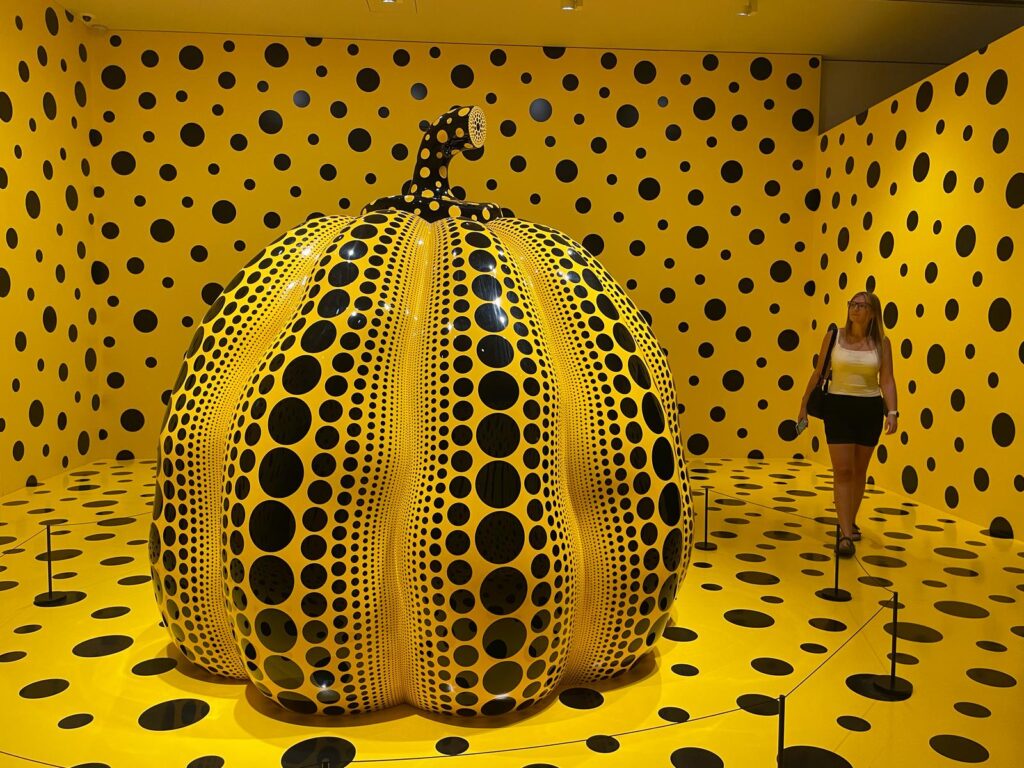
After the gallery, we headed to an “observation deck”—a slightly misleading name, as it turned out to be the rooftop of an office building. But the views were worth the climb: sweeping cityscapes with the mountains rising behind them, all bathed in sunshine. From there, we walked to the bus station to sort out our travel for the next day—lucky we did, as nearly every ticket was sold out. We just managed to snag two spots on the 7:30am bus. An early start for sure!
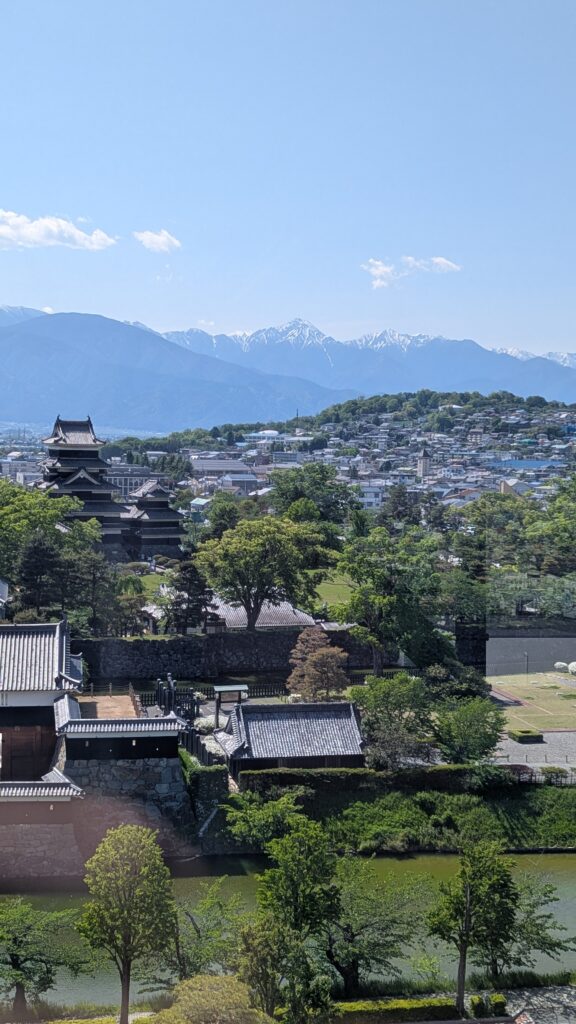
We made our way back to the old shopping street where I tried some of the region’s famous Takoyaki—octopus balls lightly fried to give a crisp shell and gooey centre, filled with octopus, pickled ginger, and green onions. Surprisingly tasty. Grace wasn’t quite as tempted and instead went for a raspberry and coriander ice cream, which she said was strangely savoury but still good. We browsed a few more little shops and then sat in the sun with cool drinks doing some trip planning. Not a high-energy day, but very pleasant in the sunshine.
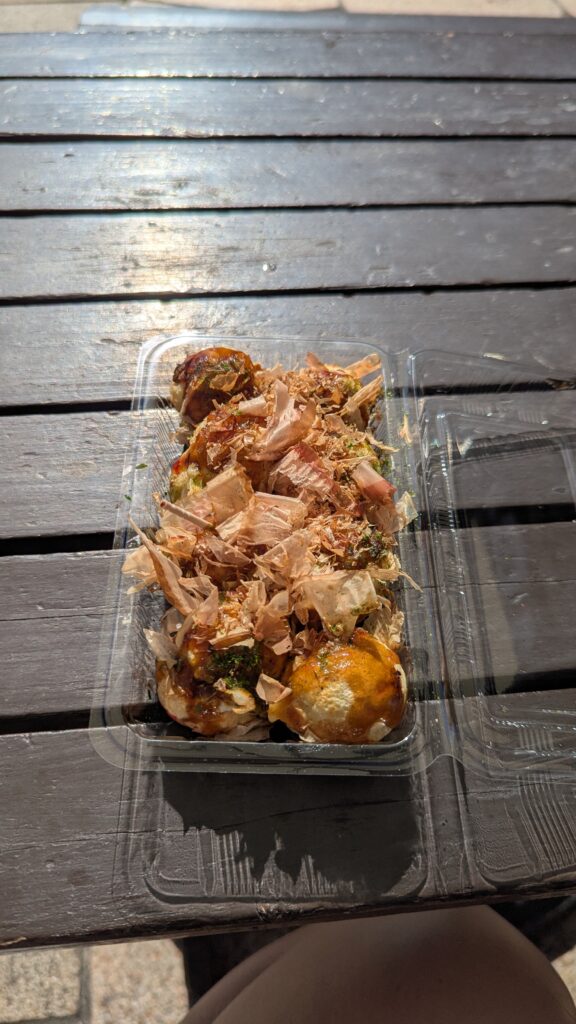
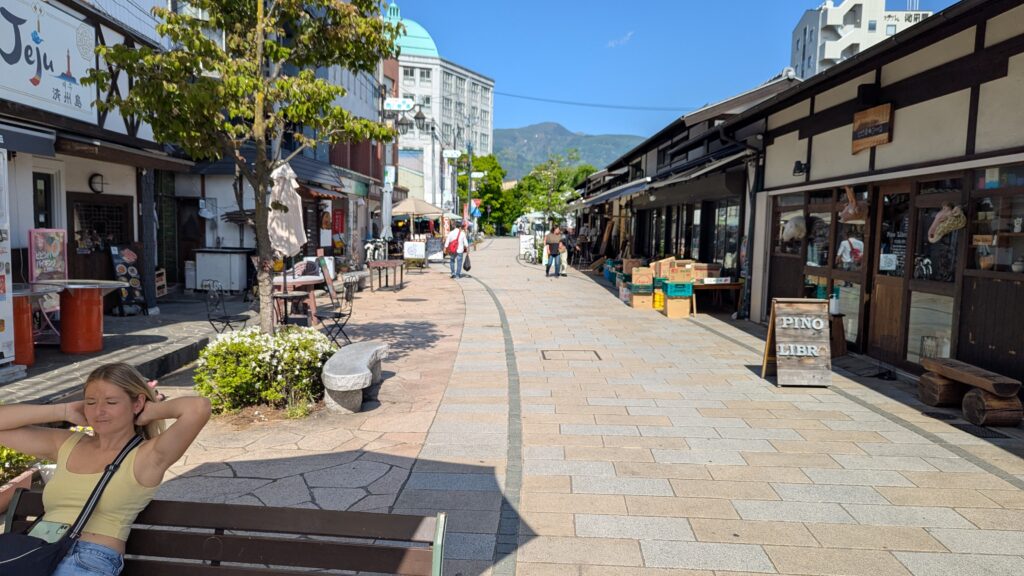
For dinner, we found ourselves drawn back to the Nepalese restaurant from the day before—it’s Grace’s favourite, and I owed her after dragging her to sushi several times. The delicious smell wafts all the way down the street and our willpower only goes so far. This time we tried momo dumplings in a curried soup—a Nepalese dish that was new to both of us. Not Japanese, but at least we were still being adventurous!
We ended up chatting with two lovely retired English women at the table next to us. They were travelling together and we had a good laugh about how the smell of the curry seemed to attract every Brit in town. We stayed talking until the restaurant closed and gently nudged us out. A really nice final evening in Matsumoto before our early start tomorrow.
Next stop: Takayama. Will tell you all about it when we get there!
Love, Alice x
